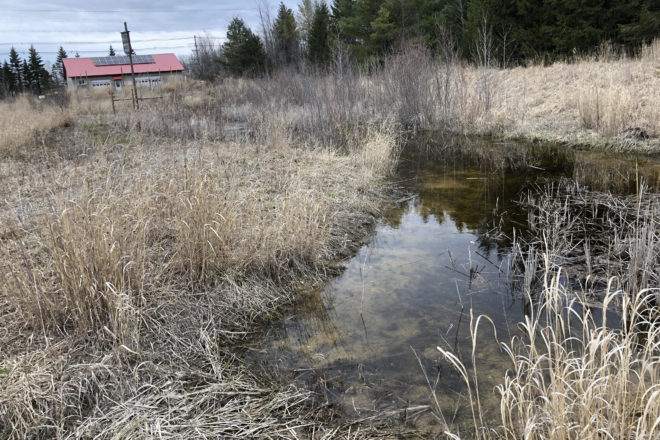Innovative Runoff Solutions Catch On
- Share
- Tweet
- Pin
- Share

After the Peninsula Pulse’s annual Sustainability issue appeared in April, more tips came in about local groups who have installed, or are installing, drainage-control features and permeable pavement in their parking lots.
Shoppers might not notice, for example, but when CVS was built on the site of the former Neighborhood Grill on Egg Harbor Road, the company added 14 water-permeable parking spaces along the north side of the parking lot. In Fish Creek, town administrator Travis Thyssen noted that the Whistling Swan owners converted all parking spaces surrounding their business to water-permeable.
Blueprints for the new Ace hardware store location on Egg Harbor Road call for a section of the parking lot to include water-permeable pavement. Door County Ace Hardware General Manager Jason Bartel said the local owners saw a need to add as much parking as possible while not exceeding a ratio of water-retention space to non-permeable surface.
“It allows us to meet our number for parking spaces while still meeting the needs for green space,” Bartel said.
He said the section of water-permeable pavement will provide filtration where water soaks downward and also limit how much runoff goes into a landscaped retention area.
A Seven-Swale Water Filter a Crossroads
When Crossroads at Big Creek needed to expand its parking lot, their solution was to set up a system to filter runoff and then direct that water to a series of ponds. Program Director and Naturalist Coggin Heeringa noted that the Crossroads nature area is built entirely on top of degraded land, formerly orchards and farmland. When Crossroads worked to steer Big Creek back into its original channel a couple of hundred yards northeast of the main buildings, they also wanted to create a series of small wetlands.
On three sides of its old parking lot, Crossroads added Spancrete Replenish permeable concrete walkways. Water from the old, center lot and the expanded asphalt lot surrounding that flows toward the water-permeable walkways. The construction crew installed 4-inch and 6-inch perforated drain tile under the walkways, and some of those direct water to a constructed wetland pond. Another directs water to a rain garden.
Overflow from that pond flows into a swale and trickles toward a second pond, and then into another ditch and small wetland pond and then another. Crossroads built seven ponds in all. The ponds provide filtration, capturing phosphorus or any other pollutants, and serve as buffers, slowing the flow of rainwater before allowing that water back into Big Creek and the bay. The ponds also provided habitat where no good habitat existed.
Crossroads designed its seven-swale system to have vernal ephemeral ponds specifically to provide habitat for amphibians, not fish, and they serve that purpose. Heeringa said if you walk near the little ponds around dusk in early spring, the sound of the frogs is deafening.
Editorial disclosure: Craig Sterrett is a full-time employee of Ace Hardware, one of the businesses he reported in this story.
